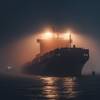LNG a Key to Cleaner Shipping
DNV has carried out a study of 59 ship segments representing the major ship types and sizes of international shipping, identifying 25 different measures that can contribute to reduced emissions. Each of these segments have been modeled separately with regard to operational assumptions, the reduction potential of each measure, the cost of each measure and the year when available measures are phased in.
For 17 of the 59 vessel types and sizes it is cost-effective to install gas-fuelled engines assuming a gas price equal to the price of marine diesel oil. The study, called “Pathway to Low Carbon Shipping” demonstrates that CO2 emissions by 2030 can be reduced by 30% below baseline through measures that save cost for the operators, and by almost 60% if all the identified measures are included.
“Many believe that gas is tomorrow’s fuel. We at DNV think it is already here. LNG as a fuel offers obvious environmental benefits,” said Remi Eriksen, Executive VP of DNV. “These benefits include nearly 100% reduction in SOX and particle emissions, 85-90% reduction in NOX emissions and 15-20% reduction in CO2 emissions.”
Abundance of LNG
“For a switch to LNG to happen certain elements need to be in place,” Eriksen pointed out. “The technology is there, as many manufactures are offering LNG fuelled engines already. A challenge is the loss of cargo space due to cylindrical LNG storage tank. For newbuildings it is fairly simple to find space for the larger fuel tanks, while this may be more difficult for retrofitting on existing ship”.
“There is an abundance of natural gas in the world. When we add unconventional resources – like e.g. shale gas – there is a 250-year supply at current usage. The spot price of LNG is already at one fourth to one third the price of diesel oil. LNG needs to be offered with a price linked to the spot market price rather than the prices of the marine diesel that it may replace.”
“The main challenge is the lack of LNG bunkering infrastructure. As an example, distribution of LNG as fuel for ships in Norway is done through dedicated terminals for ships in point-to-point traffic (ferries) or for ships always returning to the same port (supply vessels). Larger scale development should be based on making LNG available at existing bunkering stations. When it comes to sourcing of LNG – this must be based on economic considerations” Eriksen said.
www.dnv.com










